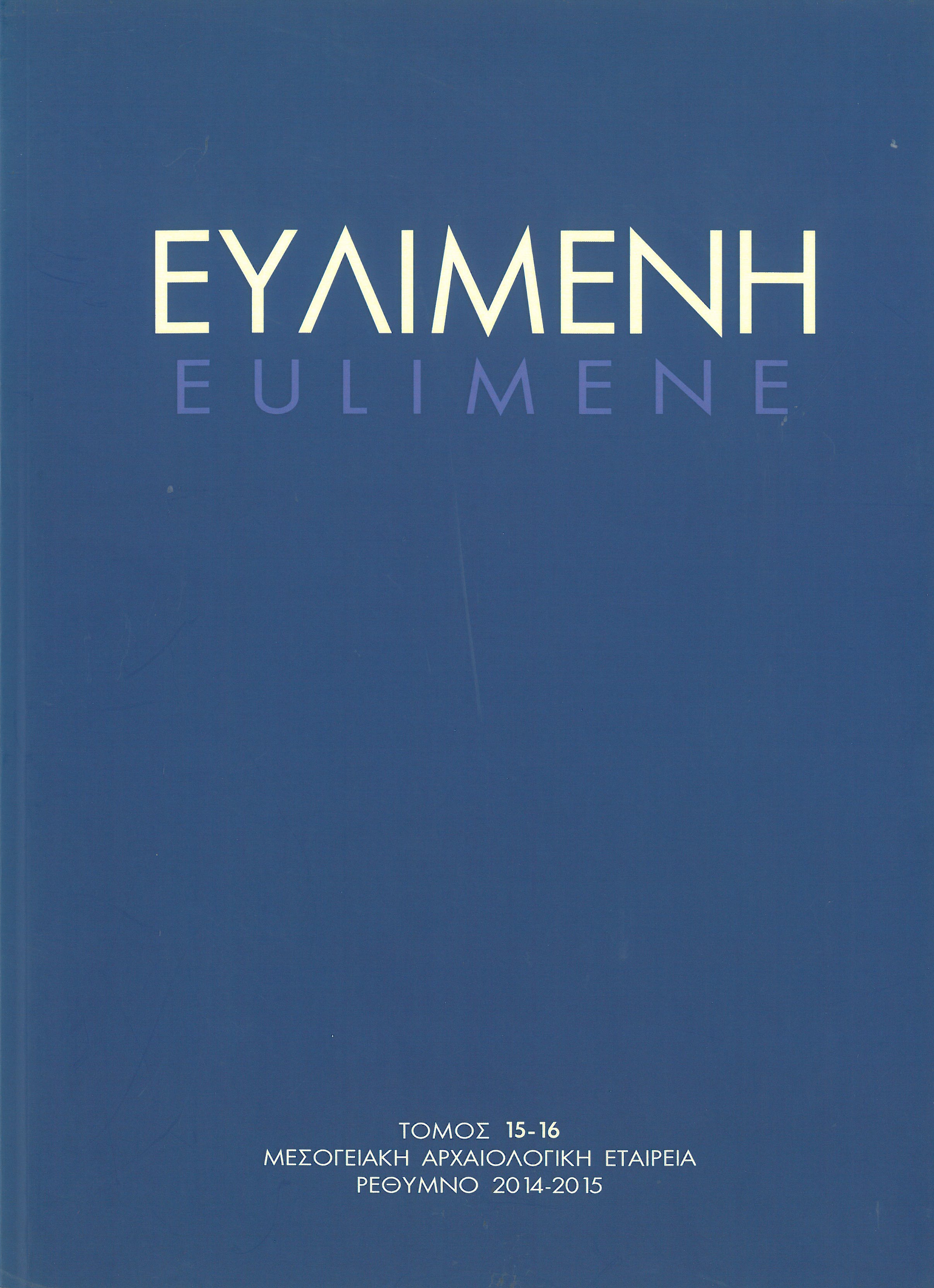Χρυσά στεφάνια με φύλλα κισσού από τις αρχαίες ροδιακές νεκροπόλεις

Περίληψη
Gold wreaths with ivy leaves from the nekropoleis of the Rhodian State. The nekropoleis over the greater area of the Rhodian State yielded a considerable number of pure gold wreaths, unfortunately most of them in fragmentary condition. Among them, two gold wreaths with ivy leaves, preserved mostly intact, are of special interest: the wreath from Megisti (Kastellorizo), now housed in the National Archaeological Museum, Athens (cat. no. Χρ 1058) and one wreath found during rescue excavation in the eastern necropolis of Rhodes (Rhodes Museum, cat. no. M 1529).
The gold wreath from Kastellorizo, found in 1913 by three residents of the island on the plateau of Hagios Georgios tou Vounou, was handed over to the archaeologist Nikolaos Kyparissis and transferred to the National Museum in Athens as a gift to the motherland from a humble faraway corner of Greek soil. Regarding its date, a first, rather early evaluation is based on its typological similarities with the excavated wreaths from Sevasti (Thessaloniki Museum, cat. no. ΜΔ 2579) and Apollonia (Thessaloniki Museum, cat. no. ΑΠΟ 662), which date to the middle and the third quarter of the 4th cent. B.C. respectively. However, certain construction innovations, already adopted in the Kastellorizo wreath (gold ribbon-shaped stalks, small tubes soldered on the circular stem for the stalks to fit into, the delicate flower sprays instead of steady corymbs etc.), are also encountered in the ivy wreath of Rhodes Museum M 1529 with gold ribbon-shaped leaf-bearing strip; since the latter was found in a stone casket (osteotheke), its earliest date is estimated at shortly before the middle of the 3rd cent. B.C. It would, therefore, be appropriate to
lower the date of the Kastellorizo wreath to the final years of the 4th or rather the early 3rd cent B.C. The wreath from Kastellorizo exudes the simplicity of a classical construction (we might characterize it as a work of art) and at the same time, it is enveloped in an aura of a more delicate movement, a subtle playfulness, a concept of wealth, which precisely characterizes a hellenistic creation.
It is doubtful whether the rather unskilled work connecting the two parts of the circular stem of the Kastellorizo wreath with twisted wire is original; the two parts may have originally been joined by a flexible ornamental element (Heraklean knot or double twined wire) or the circular stem may have been constructed as a single piece and the wire coil at the front of the wreath which keeps the two parts of the stem together may be an ancient repair. A close inspection of the stemless and somehow damaged heart-shaped leaflet which ornaments the top of the Kastellorizo wreath (now stuck on site with resin) showed that it did not originally belonged to this wreath and most probably it was used (obviously “recycled” from another wreath) to disguise the ancient repair.
On the other hand, the ivy wreath of Rhodes Museum M 1529, seems to be a fine specimen of a massive production, during which the constituent parts of a wreath were made separately and, eventually, assembled according to the wishes of the clientele; this practice may be thought as typical of the vigorous commercial activity in the Hellenistic Rhodian State. Thus, the two ivy wreaths represent two different stages of constructional conception within the chronological framework between the final years of the 4th and the middle of the 3rd cent. B.C.
The two ivy wreaths from the nekropoleis of the ancient Rhodian State (together with a third one, still unpublished, found recently during rescue excavation in the Rhodian nekropolis) constitute a relatively large proportion of the totally ten known pure gold wreaths with ivy leaves; the rarity of ivy wreaths is probably mainly due to the fact that it takes more gold sheets to fabricate heart-shaped ivy leaves than lanceolate myrtle ones. Also, the cost of ivy leaves would have been higher by the additional material and work required to reinforce the support of the sizeable heart-shaped leaves. However, it seems that the wealthy middle class Rhodian society of the Hellenistic time, largely familiar with the cult of Dionysos –obviously under the influence of the active koinon of Dionysiastai– could possibly afford the purchase of an ivy wreath. The rather large proportion of ivy leaf wreaths found in the nekropoleis of the ancient Rhodian State could also be associated with the chthonic aspect of the cult of Dionysos, which appears to have been widespread in Rhodes as demonstrated by a series of finds and, most importantly, the relief representations of the Dionysiac procession on the grave complexes at Korakonero (Bilde 1999, 227 ff.).
Λεπτομέρειες άρθρου
- Τεύχος
- ΕΥΛΙΜΕΝΗ 15-16 (2014-2015)
- Ενότητα
- ΑΡΘΡΑ
- Κατηγορίες
Οι συγγραφείς των άρθρων που δημοσιεύονται στην Ευλιμένη διατηρούν τα δικαιώματα πνευματικής ιδιοκτησίας επί των άρθρων τους, παραχωρώντας στο περιοδικό το δικαίωμα της πρώτης δημοσίευσης. Άρθρα που δημοσιεύονται στην Ευλιμένη μπορούν να χρησιμοποιούνται ελεύθερα για μη κερδοσκοπικούς σκοπούς, χωρίς δικαίωμα τροποποίησης (δημιουργία παράγωγου έργου), με αναφορά στο συγγραφέα και στην πρώτη δημοσίευση. Η Μεσογειακή Αρχαιολογική Εταιρεία διατηρεί το δικαίωμα να δημοσιεύει, να αναπαράγει, να παρουσιάζει στο κοινό, να διανέμει και να χρησιμοποιεί άρθρα που δημοσιεύονται στην Ευλιμένη σε οποιοδήποτε μέσο και μορφή, είτε μεμονωμένα είτε ως μέρη συλλογικών έργων, για όλο το χρόνο διάρκειας προστασίας της πνευματικής ιδιοκτησίας και για όλες τις χώρες του κόσμου. Αυτό περιλαμβάνει, ενδεικτικά και όχι αποκλειστικά, το δικαίωμα δημοσίευσης των άρθρων σε τεύχη του περιοδικού Ευλιμένη, αναπαραγωγής και διανομής μεμονωμένων αντιγράφων των άρθρων, αναπαραγωγής ολόκληρων των άρθρων σε άλλη έκδοση της Μεσογειακής Αρχαιολογικής Εταιρείας, και αναπαραγωγής και διανομής των άρθρων ή της περίληψης τους με χρήση πληροφορικού συστήματος αποθετηρίου.





